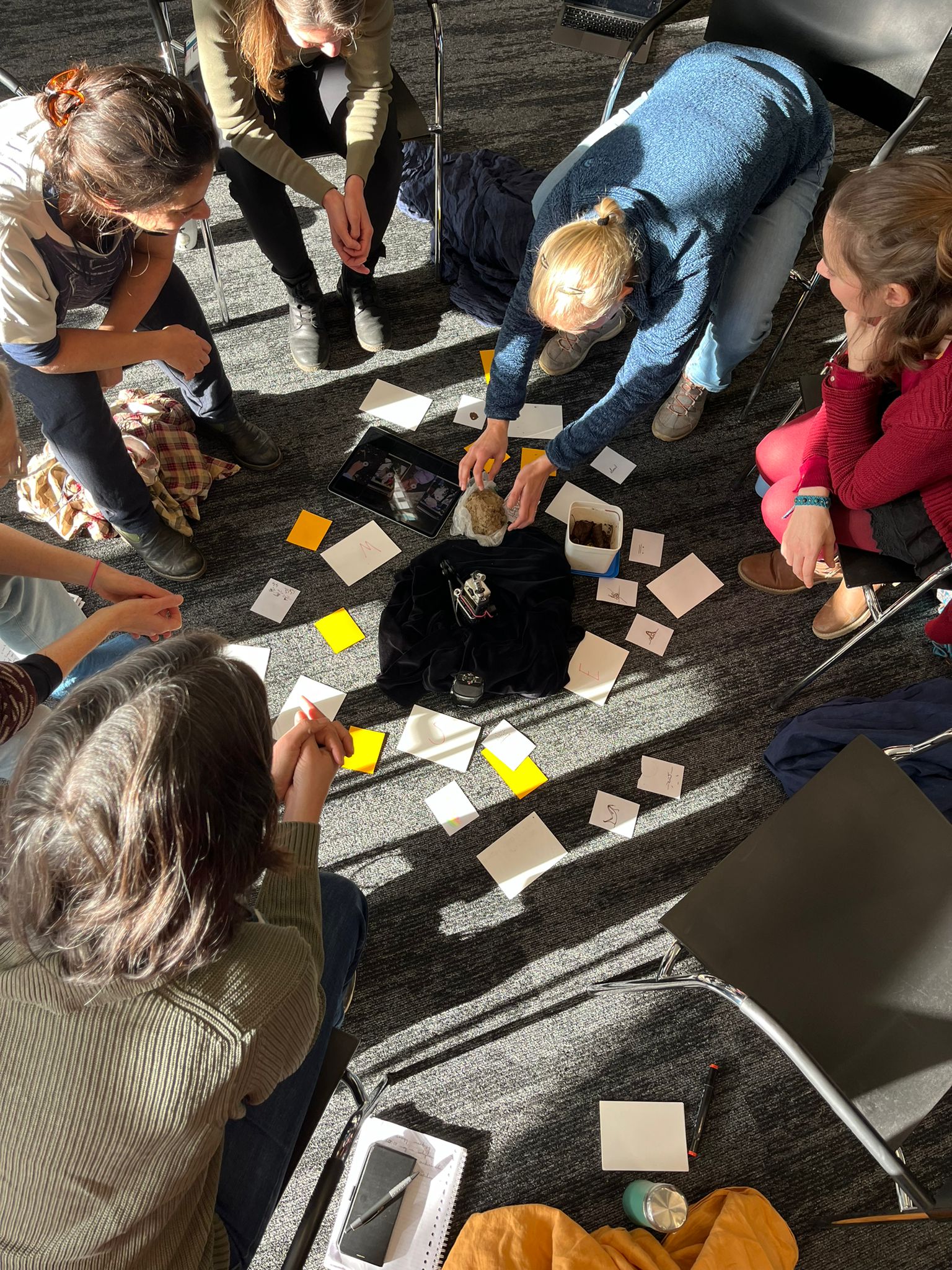Emilie Gallier, Nienke Terpsma and Nina Boas consult very young people (2-4 years old) and earthworm scientists (five women working at Wageningen University) gathering questions in the form of drawings, gathering information on earthworms, knowledges and skills to connect with earthworms and through them connecting to soils in regenerative ways.
The dialogues took place alternating visits to young people in daycares in Almere (encounters with 5 groups were supported by 2turvenhoog between May 2024 and February 2025), and visits to the scientists in Wageningen (2 visits in November-December 2024).
Tracks 1 to 3 (published in April 2025) invite to listen in to the first half of this process (one gathering of questions from young people and one encounter with scientists of Wageningen).
Thanks to Marie Zwetsloot and Giulia Bongiorno for welcoming the dialogues in Wageningen and organizing the encounters. With the support of: Lectorate Academy of Theatre and Dance, Wageningen University, 2turvenhoog, THIRDTalks, PØST Cie.
Hannah Vos works as a lecturer at a soil chemistry group in Wageningen University. In her PhD she focussed on the effect of earthworms on making phosphorus—one of the key nutrients for plants—more available. “Phosphorus is (…) present everywhere, but in unavailable forms. And in earthworm casts, we saw that the available form of phosphorus that plants can use is much higher.”
Ingrid Lubbers works in the soil Geography and landscape group. Her research is mostly focused on earthworm activities and their effects on ecosystem services. “I'm also a lecturer and so I teach quite a lot—sometimes about earthworms. Actually, this afternoon I will bring them into the class.”
Loes van Schaik is a soil hydrologist looking into the influence of networks of larger pore systems in the soils and how that influences water flow and transport of solutes in the soil. “And so that's how I came to earthworms (…) To study spatial distribution and temporal activity of different earthworm species and how they influence water and solute distribution and flow in the soils. Yeah. And vice versa.”
Nienke Terpsma is a visual artist, editor and book designer who got into audio as well. She joined Gleaners and the Worms since two years, and is interested both in earthworms and in people looking at them. “So I'm super excited to speak to people who actually know something about it.”
Emilie Gallier is a dancer/choreographer and artist-researcher working for the Academy of Theater and Dance in Amsterdam. With her brother, a living-soils gardener, she co-founded Les Minieres, where gardening and art-making come together. “He's been … bringing attention to the role of worms. While I was busy with bookworms, (…) the metaphor of how reading could be some kind of digesting process”.
Nina Boas studied visual arts, sculpture, and then theater. Her practice combines rituals, visual performance art, and theater with a focus on healing, which is expressed in various ways. “I work a lot with children. And then I also do facilitation of groups, adults, where then I bring them through processes.”
Alix Vidal is a soil scientist. Her research focuses on two key soil engineers—earthworms and roots—examining their impact across various spatial scales using diverse approaches. Ultimately, she aims to develop applied strategies for the sustainable management of soils in response to global change challenges. ”I try to incorporate the idea that earthworms are not on their own. They interact with roots. They interact with fungi that are forming symbiosis with the roots.”
This THIRDtalk is published in April 2025.

